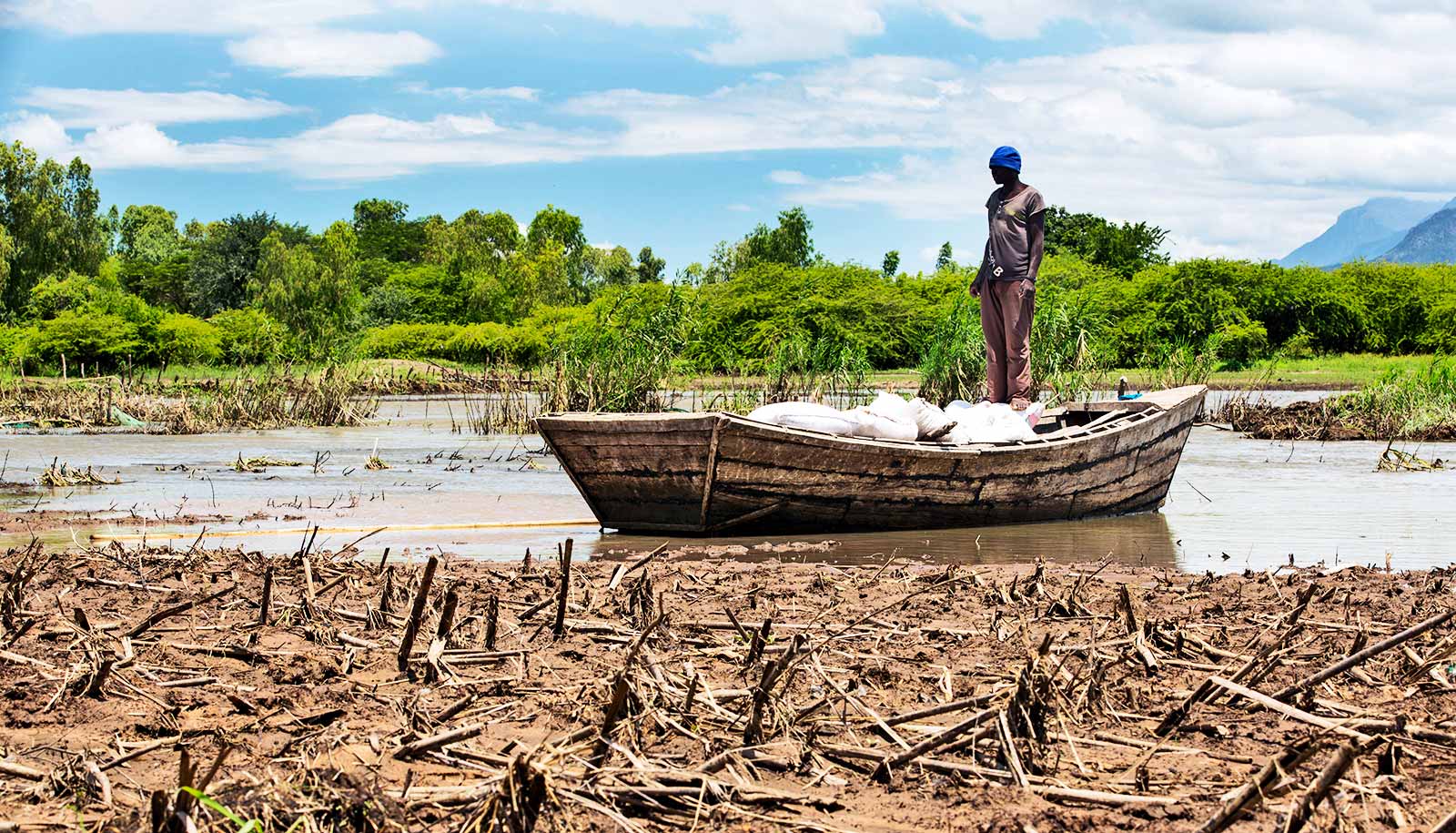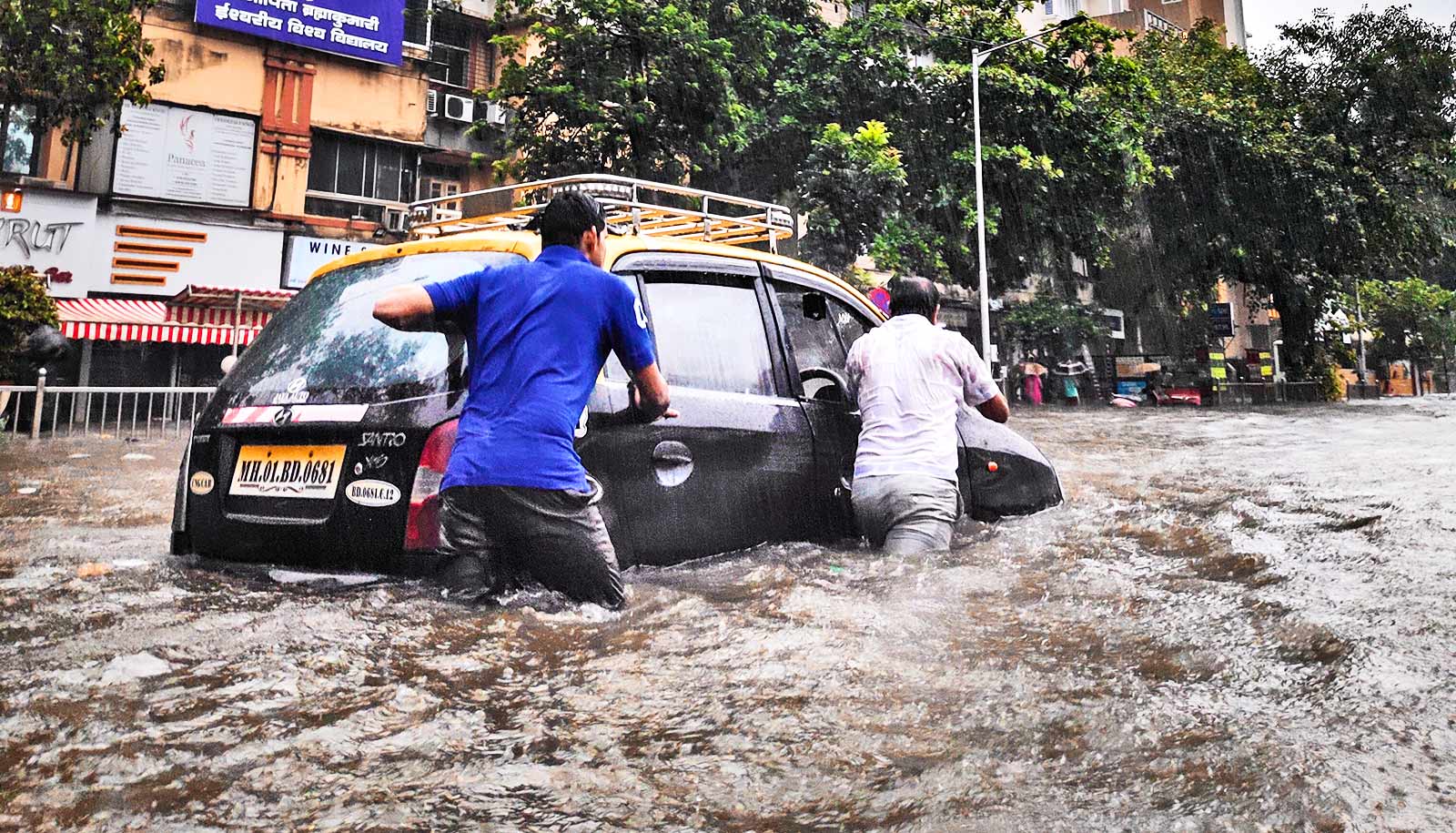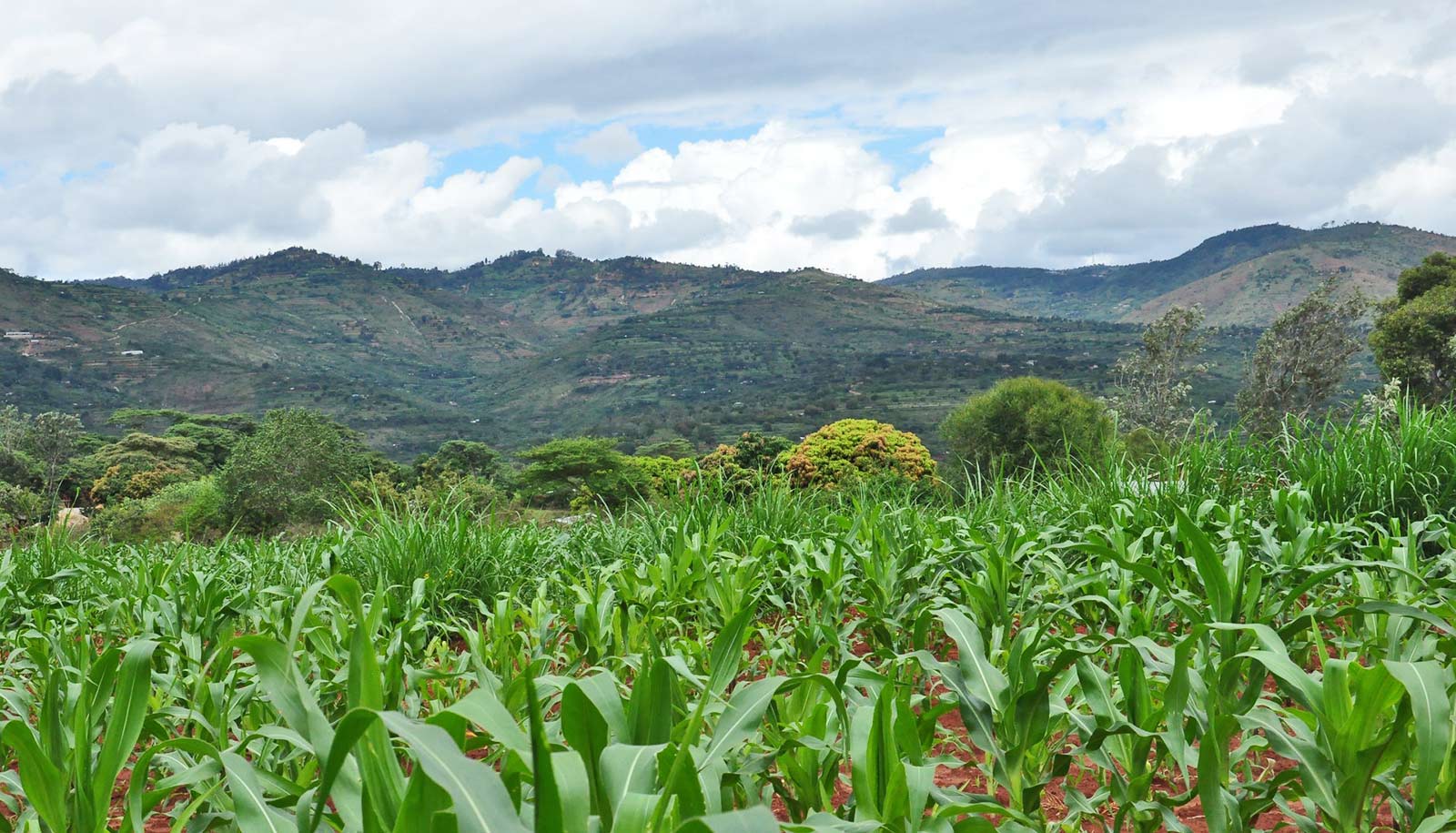Flooding can affect food security for over 5.6 million people across several African nations, according to a new study.
The work comes at a time when floods have also devastated Pakistan, India, large parts of the European Union, and the United States.
“Our findings show that floods can impact food security both immediately and in the months after the flood event,” says Connor Reed, a former graduate student at the New York University Center for Data Science and lead author of the paper in the Proceedings of the National Academy of Sciences.
“In many flood events we assessed, there were substantial damages to infrastructure, croplands, and livestock, which compromised food production and access, as well as water resources and sanitation also critical to food security.”
In recent years, record rainfall and flooding have prompted increased attention to the ramifications for affected populations and pointed to the urgency for a greater understanding of the magnitude of their destruction, particularly on populations’ food needs.
To gain detailed insights into the impact of flood disasters, Reed, along with Sonali Shukla McDermid, an associate professor in New York University’s environmental studies department, and other colleagues, examined more than a dozen countries across western, eastern, and southern Africa, including Nigeria, Niger, Kenya, Mozambique, and Malawi, among others.
Over the studied period (2009-2020), the researchers examined how key flood characteristics, including location, duration, and extent, influence an independent food insecurity metric used by the USAID-created Famine Early Warning System: the Integrated Food Security Phase Classification (IPC) scale.
IPC measures the severity of food insecurity using a five-point scale: minimal food security (IPC 1), stressed (IPC 2), emergency (IPC 3), crisis (IPC 4), and famine (IPC 5). The team measured the impact of flooding over extended periods of time using panel analyses.
The results showed that approximately 12% of those who experienced food insecurity in the studied areas had their food security status affected by flooding over the 2009-2020 period. These impacts included detrimental increases to food insecurity, as expected, but there were also some beneficial impacts that ameliorated food insecurity, depending on the time period and regional scale.
“Our results suggest that floods can have opposing effects on food security at different spatial scales, particularly at time periods after they occur,” says coauthor Weston Anderson, a research scientist at NASA Goddard Space Flight Center and the University of Maryland’s Earth System Science Interdisciplinary Center. “In a given year, excess precipitation may immediately lead to floods that destroy crops in a localized area while also being associated with beneficial growing conditions that boost crop production on the country-scale.”
The researchers, nevertheless, caution that any positive impacts from flooding are not guaranteed, and these findings instead speak to the importance of improved data collection on flood and food security for disaster response and climate adaptation planning.
“What we highlight in particular is that flooding has important but complicated impacts on food security at different times and spatial scales,” McDermid says. “This is however largely understudied globally, and therefore not well understood. Improving knowledge of where, when, and to what extent floods affect food security is crucial, especially for decision-makers across flood-prone rural areas that contribute to regional and global food supplies.”
Notably, the results also revealed that flooding significantly affects food security in highly localized and varied ways—as opposed to uniformly across entire countries. The researchers say this indicates that the relationship between flooding and food security is not due to country-wide dynamics (e.g., changes in food prices), but instead to context-specific impacts on food production (e.g., subsistence crop loss), food access (e.g., destruction of infrastructure or direct loss of livelihoods), and/or food utilization (e.g., water-borne diseases and sanitation deficiencies).
“Understanding flood impacts on food security is of growing importance for the humanitarian community,” says coauthor Andrew Kruczkiewicz of the International Research Institute for Climate and Society at Columbia University. “With the outputs of this study, the humanitarian community is in a better position to decide what actions, including anticipatory, preparedness and response, to prioritize—or deprioritize—in the areas we studied.”
“This research illustrates how cross-disciplinary teams can generate exponential improvements in our understanding of societal problems,” says Jeffrey Mantz, a program director for the National Science Foundation, which supported the research. “We knew that flooding had downstream impacts, but this study clarifies and quantifies those impacts in ways that will have important benefits for people and communities that are facing increasingly frequent severe weather events.”
Additional coauthors are from Columbia University. The National Science Foundation’s Growing Convergence Research Program funded the work.
Source: NYU


